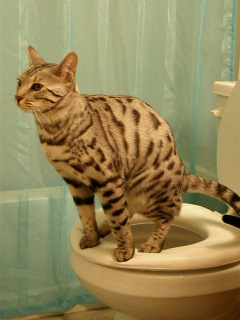Everyone is bound to have their unique idea on the subject of How to Dispose of Cat Poop and Litter Without Plastic Bags.

Intro
As feline owners, it's vital to bear in mind exactly how we get rid of our feline pals' waste. While it may appear convenient to purge feline poop down the toilet, this method can have harmful effects for both the atmosphere and human health.
Alternatives to Flushing
Fortunately, there are more secure and much more liable methods to dispose of feline poop. Consider the adhering to alternatives:
1. Scoop and Dispose in Trash
One of the most common approach of getting rid of feline poop is to scoop it right into a biodegradable bag and toss it in the trash. Make sure to make use of a specialized clutter scoop and take care of the waste quickly.
2. Usage Biodegradable Litter
Select biodegradable feline clutter made from materials such as corn or wheat. These trashes are eco-friendly and can be safely thrown away in the garbage.
3. Bury in the Yard
If you have a lawn, take into consideration burying pet cat waste in a designated area far from veggie gardens and water sources. Make certain to dig deep enough to prevent contamination of groundwater.
4. Set Up a Pet Waste Disposal System
Buy a pet waste disposal system especially created for pet cat waste. These systems use enzymes to break down the waste, decreasing smell and ecological influence.
Health Risks
In addition to environmental worries, purging cat waste can also present wellness risks to humans. Feline feces may consist of Toxoplasma gondii, a bloodsucker that can create toxoplasmosis-- a possibly severe illness, especially for expecting females and people with weakened immune systems.
Environmental Impact
Flushing cat poop introduces hazardous microorganisms and parasites into the water system, presenting a substantial risk to aquatic ecosystems. These contaminants can negatively impact marine life and concession water top quality.
Verdict
Liable pet dog possession expands beyond supplying food and sanctuary-- it additionally entails correct waste administration. By avoiding purging cat poop down the bathroom and going with alternative disposal techniques, we can lessen our environmental footprint and safeguard human health and wellness.
Why Can’t I Flush Cat Poop?
It Spreads a Parasite
Cats are frequently infected with a parasite called toxoplasma gondii. The parasite causes an infection called toxoplasmosis. It is usually harmless to cats. The parasite only uses cat poop as a host for its eggs. Otherwise, the cat’s immune system usually keeps the infection at low enough levels to maintain its own health. But it does not stop the develop of eggs. These eggs are tiny and surprisingly tough. They may survive for a year before they begin to grow. But that’s the problem.
Our wastewater system is not designed to deal with toxoplasmosis eggs. Instead, most eggs will flush from your toilet into sewers and wastewater management plants. After the sewage is treated for many other harmful things in it, it is typically released into local rivers, lakes, or oceans. Here, the toxoplasmosis eggs can find new hosts, including starfish, crabs, otters, and many other wildlife. For many, this is a significant risk to their health. Toxoplasmosis can also end up infecting water sources that are important for agriculture, which means our deer, pigs, and sheep can get infected too.
Is There Risk to Humans?
There can be a risk to human life from flushing cat poop down the toilet. If you do so, the parasites from your cat’s poop can end up in shellfish, game animals, or livestock. If this meat is then served raw or undercooked, the people who eat it can get sick.
In fact, according to the CDC, 40 million people in the United States are infected with toxoplasma gondii. They get it from exposure to infected seafood, or from some kind of cat poop contamination, like drinking from a stream that is contaminated or touching anything that has come into contact with cat poop. That includes just cleaning a cat litter box.
Most people who get infected with these parasites will not develop any symptoms. However, for pregnant women or for those with compromised immune systems, the parasite can cause severe health problems.
How to Handle Cat Poop
The best way to handle cat poop is actually to clean the box more often. The eggs that the parasite sheds will not become active until one to five days after the cat poops. That means that if you clean daily, you’re much less likely to come into direct contact with infectious eggs.
That said, always dispose of cat poop in the garbage and not down the toilet. Wash your hands before and after you clean the litter box, and bring the bag of poop right outside to your garbage bins.
https://trenchlesssolutionsusa.com/why-cant-i-flush-cat-poop/

As a devoted person who reads on Can You Flush Cat Poop Down The Toilet?, I thought sharing that article post was really useful. Sharing is nice. Helping others is fun. Thanks a lot for your time. Kindly stop by our website back soon.
Appointment